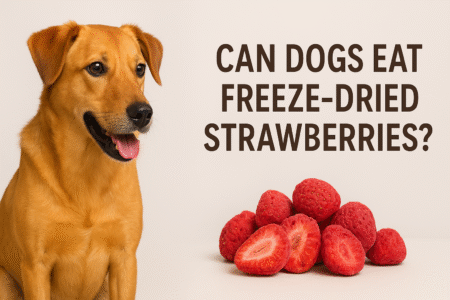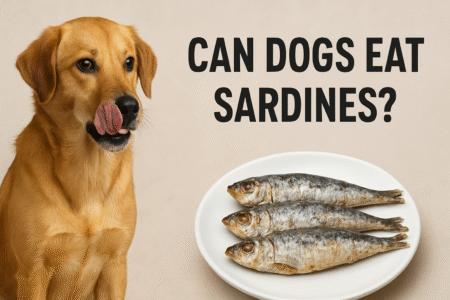- Understanding Vegetable Oil and Your Dog’s Diet
- What Exactly Is Vegetable Oil?
- How Dogs Process Oils and Fats
- Common Sources of Vegetable Oil in Dog Food
- Can Dogs Have Vegetable Oil? The Simple Answer
- Nutritional Profile of Vegetable Oil for Canines
- Caloric Content and Fat Composition
- Essential Fatty Acids in Vegetable Oil
- Comparing Vegetable Oil to Other Dietary Fats
- Potential Benefits of Vegetable Oil for Dogs
- Risks and Side Effects of Giving Dogs Vegetable Oil
- Digestive Upset and Diarrhea
- Weight Gain and Obesity Concerns
- Pancreatitis Risk Factors
- Long-term Health Implications
- How Much Vegetable Oil Is Safe for Dogs?
- Dosage Guidelines Based on Dog Size
- Frequency Recommendations
- Signs You’re Giving Too Much
- When Veterinarians Recommend Vegetable Oil
- Healthier Oil Alternatives for Your Dog
- Olive Oil Benefits
- Coconut Oil for Dogs
- Fish Oil and Omega Supplements
- Incorporating Vegetable Oil in Homemade Dog Food
- Safe Cooking Methods
- Recipe Ideas and Tips
- Which Cooking Oils Should Dogs Never Consume
- Frequently Asked Questions
- Conclusion: Making Informed Choices About Vegetable Oil for Your Dog
- Table of Contents
When you’re cooking for your dog, you might ask: Can dogs eat vegetable oil? This guide tells you if vegetable oil is safe for dogs. It also explains how it fits into their diet. Knowing this helps keep your pet’s meals both tasty and healthy.
Many people wonder about vegetable oil when making homemade dog treats or changing their diet. This article looks into safety, benefits, and risks. It helps you decide when and how to use vegetable oil responsibly. You’ll learn what experts say is safe for dogs and what to avoid.
Understanding Vegetable Oil and Your Dog’s Diet
Vegetable oil plays a big role in what dogs eat. It comes from plants, vegetable and has different types of fats that are good for dogs. It’s important to know how dogs handle these fats and where they are found in dog food.

A close-up view of a dog food bowl filled with different types of vegetable oils, such as olive oil, sunflower oil, and canola oil. The oils are glistening and pouring out of a glass bottle, creating a glossy and reflective surface. The background is blurred, but hints at a clean and minimalist kitchen setting, allowing the focus to remain on the dog food and the oils. The lighting is soft and natural, casting gentle shadows and highlights on the scene. The overall mood is one of informative clarity, inviting the viewer to learn more about the role of vegetable oils in a dog’s diet.
What Exactly Is Vegetable Oil?
Vegetable oil is made from plants like soybeans, canola, and corn. The refined kind is clean but might lose some nutrients. When choosing oil for dogs, it’s key to find one that tastes good, stays stable, and is nutritious.
For example, canola oil has omega-3s, which are good for dogs. Corn oil, on the other hand, has omega-6s, which help with skin health.
How Dogs Process Oils and Fats
Dogs break down fats with enzymes from their pancreas. Their liver then turns these fats into energy or stores them. This process is important for dogs to stay healthy.
Healthy fats are good for dogs because they help cells work right and absorb nutrients. But, dogs need to eat them in the right amount to avoid getting too fat or having stomach problems.
Common Sources of Vegetable Oil in Dog Food
Vegetable oils are in dog food to keep it fresh and tasty. Companies use them to meet fat requirements set by AAFCO. You might see soybean or sunflower oil in dog food ingredients.
These oils add the fats dogs need. But, the quality of these oils can vary depending on how they are processed.
Can Dogs Have Vegetable Oil? The Simple Answer
Yes, dogs can have vegetable oil in small amounts. It’s not toxic to most dogs, but safety depends on moderation and quality. A tiny sprinkle might be okay, but it shouldn’t be a regular part of their diet.

A closeup of a glass jar filled with a clear, golden liquid against a simple, clean background. The jar has a classic screw-top lid, and the liquid gently reflects the surrounding light, creating a warm, inviting appearance. The image conveys a sense of purity, safety, and suitability for canine consumption, aligning with the article’s topic of vegetable oil for dogs.
Choose unflavored, additive-free oils like canola or sunflower oil. Avoid oils with artificial additives or seasonings. Always check the ingredient labels to make sure there are no harmful preservatives.
Vets say vegetable oil doesn’t provide essential nutrients for dogs. Too much can upset their stomachs or cause weight gain. Even occasional use isn’t a good substitute for regular meals. Always talk to your vet before adding new foods.
Future sections will discuss balancing risks and benefits. We’ll look at nutritional profiles, potential dangers, and safer alternatives like fish oil or coconut oil. This will help you use vegetable oil safely and keep your dog healthy in the long run.
Nutritional Profile of Vegetable Oil for Canines
Vegetable oils are important for dogs, giving them energy and key nutrients. They have different calories and fats, which can be good or bad. Knowing what’s in them helps owners make the right choices.
Caloric Content and Fat Composition
Most vegetable oils have about 120 calories per teaspoon. They have fats like polyunsaturated and monounsaturated. Canola and soybean oils have good fat ratios, but too much can lead to weight gain. It’s important to use them in the right amount.
Essential Fatty Acids in Vegetable Oil
Omega-3 and omega-6 acids are crucial for a dog’s skin, coat, and immune system. Flaxseed oil has omega-3s to fight inflammation. Sunflower oil has omega-6s for healthy skin. It’s key to use the right amount of these healthy fats for dogs.
Comparing Vegetable Oil to Other Dietary Fats
Vegetable oils usually have less saturated fat than animal fats. Coconut oil, however, has saturated fats that can help digestion. Olive oil has antioxidants but more omega-6s. Some dog-friendly oils are better for certain health needs. Fish oils, though not vegetable, are another omega-3 option. Each oil should be chosen based on a dog’s specific needs.
Potential Benefits of Vegetable Oil for Dogs
Vegetable oil can offer the benefits of vegetable oil for dogs when used right. Oils like flaxseed or soybean have omega-3 and omega-6 fatty acids. These support skin health and make a dog’s coat shiny and less shedding.
Dogs with dry skin might see better results when these oils are added to their food in small amounts.
Some oils, like canola, have anti-inflammatory properties. They can help with minor joint stiffness or skin irritations. For dogs with sensitive skin, linoleic acid in vegetable oil can act as a natural moisturizer, reducing flakiness.
However, the effects can vary based on the oil type and the dog’s specific needs.
Vegetable oil can also aid digestion by improving nutrient absorption. Fat helps the body process vitamins A, D, E, and K. This ensures dogs get more from their food. Some experts suggest tiny amounts of oils like corn oil can help with occasional digestive issues.
But, always talk to a vet before adding oils to your dog’s diet. Choose options like safflower or sunflower that don’t have artificial additives. Watch your dog’s reaction to ensure any benefits of vegetable oil for dogs are worth it.
Risks and Side Effects of Giving Dogs Vegetable Oil
Vegetable oil might seem safe, but it can pose risks to dogs. Too much can upset their stomachs, leading to health problems. It’s important for pet owners to weigh the benefits against the dangers.
Digestive Upset and Diarrhea
Too much oil can make a dog’s stomach unhappy. This might cause vomiting, loose stools, or pain. If your dog has frequent bowel movements or seems tired, they might need a vet.
Weight Gain and Obesity Concerns
Vegetable oil has a lot of calories, which can make dogs gain weight fast. This can lead to diabetes, joint problems, and heart issues. Obesity can shorten a dog’s life.
Pancreatitis Risk Factors
High-fat oils can cause pancreatitis, a serious condition. It leads to severe pain and vomiting. Dogs with past pancreatitis problems are at higher risk.
Long-term Health Implications
Using vegetable oil regularly can cause fatty liver disease or chronic inflammation. Unsaturated fats can become harmful when heated too much. This can stress a dog’s vital organs over time.
How Much Vegetable Oil Is Safe for Dogs?
Figuring out how much vegetable oil can dogs have depends on their size and health. Always choose what’s safe for dogs by following these guidelines. For small breeds under 20 lbs, start with a quarter teaspoon daily.
Medium dogs (21–50 lbs) can have up to half a teaspoon. Larger breeds over 50 lbs might tolerate up to a full teaspoon. Never give more without your vet’s advice.
Dosage Guidelines Based on Dog Size
Portions are important. Use a measuring spoon to avoid overfeeding. Even small amounts too often can cause digestive problems.
Adjust the amount based on your dog’s activity level. Less active pets need less oil than more active ones.
Frequency Recommendations
Give vegetable oil no more than three times a week. Mixing small amounts into meals helps avoid sudden fat intake. Unless a vet says it’s okay, don’t give it daily, especially for dogs with weight or pancreas issues.
Signs You’re Giving Too Much
Look out for loose stools, vomiting, or loss of appetite. Sudden weight gain or feeling tired may mean you’re giving too much. If you see these signs, stop and talk to a vet right away.
Remember, every dog is different. Senior dogs or those with diabetes might need even less. Choose high-quality oils like canola or flaxseed for omega fatty acids without too much saturated fat. Never think all oils are the same—some, like those with trans fats, are never safe.
When Veterinarians Recommend Vegetable Oil
Vets sometimes recommend vegetable oil for certain health issues. For dogs with constipation, a small amount can help. It makes the intestines slippery, helping with digestion.
It also helps with skin problems like dryness or flakiness. The essential fatty acids in safe oils can improve these conditions.
Long-haired dogs might get vegetable oil to help with hairballs. It makes it easier for hair to move through their digestive system. Vets also use it to give dogs medicine they might not want to take.
But, it’s important to get the right amount. Too much can cause problems like pancreatitis or weight gain. Always talk to a vet before using vegetable oil for health reasons.
While it’s not a regular part of their diet, vegetable oil has its uses. It’s part of targeted treatments. Always follow your vet’s advice to keep your dog safe and healthy.
Healthier Oil Alternatives for Your Dog
Looking for vegetable oil substitutes for dogs? Many dog-friendly oils are better for your pet’s health. These options are safer and more nutritious than regular vegetable oils. They can make your dog’s diet healthier and safer.
Olive Oil Benefits
Extra virgin olive oil is full of monounsaturated fats and antioxidants. These help reduce inflammation. It also has omega-9 fatty acids that are good for the heart and brain.
Use it in small amounts as a topper or in meals. Always choose unflavored varieties to avoid harmful additives.
Coconut Oil for Dogs
Coconut oil has medium-chain triglycerides (MCTs) that are easy to digest. They give quick energy. It may also improve your dog’s skin and coat.
Start with ¼ teaspoon per 10 pounds of body weight. Slowly increase as needed to see how your dog reacts.
Fish Oil and Omega Supplements
Fish oil is rich in omega-3 fatty acids like EPA and DHA. These are important for joints, heart, and immune health. Choose high-quality brands like Nordic Naturals or Salmon Oil.
Avoid oils with artificial additives. Follow the dosage on the label to avoid too much vitamin A.
Switching to these oils can lower the risks of some vegetable oils. These risks include inflammation or poor nutrient balance. Always talk to your vet before adding new supplements. This ensures they meet your dog’s specific needs.
Incorporating Vegetable Oil in Homemade Dog Food
When adding cooking oil for dogs to homemade meals, focus on safe methods and balanced nutrition. Always choose oils with high smoke points to avoid harmful compounds during cooking. Dog-friendly oils like coconut or olive oil work well when heated gently. Avoid deep-frying, which can create toxic fumes.
Safe Cooking Methods
Heat oils to moderate temperatures only. For example, drizzle olive oil over cooked veggies or mix a teaspoon of coconut oil into kibble. Never reuse cooking oil multiple times, as this can degrade its quality. Store leftover oils in a cool, dark place to preserve nutrients.
Recipe Ideas and Tips
A simple recipe combines cooked chicken, steamed carrots, and a quarter-teaspoon of cooking oil for dogs per cup of food. Another option: blend pumpkin, turkey, and a dash of flaxseed oil for omega-3 benefits. Always consult your vet before adding new ingredients.
Keep portions minimal—no more than 1 tsp of oil per 10 pounds of your dog’s weight. Rotate oils to provide varied nutrients but prioritize dog-friendly oils proven safe. Homemade meals should supplement—not replace—complete dog food.
Which Cooking Oils Should Dogs Never Consume
Not all cooking oil for dogs are safe. Garlic-infused oils are very dangerous. They can cause weakness or vomiting. Onion-laced oils also pose a risk, leading to anemia.
Peanut and macadamia nut oils can cause severe allergic reactions. These reactions include swelling or trouble breathing. Also, oils with artificial preservatives like BHA/BHT can harm the liver or kidneys.
Rancid oils are toxic, even if they are safe when fresh. Bad-smelling oil can lead to diarrhea, stomach pain, or pancreatitis. Never give dogs flavored microwave popcorn oils with diacetyl, as it can cause respiratory issues.
If your dog eats something bad, call a vet right away. Signs like lethargy, drooling, or tremors need quick attention.
Pet owners should always check labels. Choose vet-approved oils like coconut or olive oil. Always pick quality and fresh cooking oil for dogs. This way, you avoid the risks of giving dogs vegetable oil and prevent expensive vet visits or health problems.
Frequently Asked Questions
Is vegetable oil ok for dogs to eat?
In small amounts, vegetable oil is generally safe for dogs, but excessive consumption can cause digestive issues or obesity.
What oil is safe for dogs?
Coconut oil, fish oil, olive oil, and flaxseed oil are generally safe and beneficial for dogs in moderation.
Is vegetable oil a laxative for dogs?
Yes, vegetable oil can have a mild laxative effect on dogs and may cause diarrhea if given in excess.
Can dogs eat chicken fried in vegetable oil?
Dogs can eat chicken fried in vegetable oil in small amounts, but it’s not recommended due to high fat content, which can cause digestive issues or pancreatitis.
Can dogs eat olive oil?
Yes, dogs can eat olive oil in moderation, as it supports skin, coat, and overall health.
Can cooking oil kill a dog?
In large amounts, cooking oil can cause severe digestive issues or pancreatitis in dogs, which can be life-threatening.
Conclusion: Making Informed Choices About Vegetable Oil for Your Dog
When thinking about adding vegetable oil to your dog’s food, remember the facts. Small amounts are not toxic, but it’s important to consider your dog’s health. Always start with a small amount and talk to a vet before adding it to their diet.
Dogs with pancreatitis or weight issues should not have vegetable oil. It’s best to avoid it for their health.
Looking into vegetable oil substitutes for dogs like olive or coconut oil might be a better choice. These oils have antioxidants or medium-chain fatty acids. They offer benefits without the risks of vegetable oil.
Fish oils are also good for dogs. They have omega-3s that help with skin and joint health. Always check pet food labels for hidden oils and follow the recommended amounts.
Every dog is different. Their needs depend on age, breed, and health conditions. Always follow the right dosage for your dog’s weight and watch for any signs of trouble.
If your dog has digestive issues, stop using it right away and get advice. Choosing the right ingredients and following your vet’s advice is key to your dog’s health.
By making smart choices, you can ensure your dog gets the nutrients they need safely. Opt for healthier alternatives and stay informed. This way, you support your dog’s long-term health and well-being.
Table of Contents
Top 10 Best Electric Dog Training Collars Reviews in 2024 ( Buying Guide )
Top 10 Best Harnesses For Boxers in 2024 (Reviews & Buying Guide)
Top 10 Best No Pull Dog Harness for Large Dogs in 2024 (Reviews & Buying Guide)
Top 10 Best Joint Supplements for Labrador Retriever in 2024 (Reviews & Buying Guide)
Top 6 Best Dog Shock Collar Reviews in 2024 ( Buying Guide )
Top 10 Best Dog Cooling Vests in 2024 (Reviews & Buying Guide)
Top 10 Best Brush for Pitbull in 2024 (Reviews & Buying Guide)
Top 10 Best Dog Diapers for Poop in 2024 (Reviews & Buying Guide)
Top 10 Best Chew Toys for Lab Puppies in 2024 (Reviews & Buying Guide)
Top 5 Best Dog Beds for Great Danes Reviews in 2024 – Buying Guide














Leave a Reply